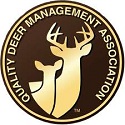 Sunn hemp (Crotalaria juncea) is a warm-season annual legume that has garnered attention from food plotters in recent years in the everlasting search for the new magic deer forage. Sunn hemp is a tropical/sub-tropical plant native to India. Research trials for this species date back to the 1930s in the United States, but more recent interest has investigated sunn hemp’s performance as a cover crop and green manure. Sunn hemp has shown great ability to increase soil organic matter and add nitrogen to the soil for use by subsequent plantings.
Sunn hemp (Crotalaria juncea) is a warm-season annual legume that has garnered attention from food plotters in recent years in the everlasting search for the new magic deer forage. Sunn hemp is a tropical/sub-tropical plant native to India. Research trials for this species date back to the 1930s in the United States, but more recent interest has investigated sunn hemp’s performance as a cover crop and green manure. Sunn hemp has shown great ability to increase soil organic matter and add nitrogen to the soil for use by subsequent plantings.
Sunn hemp has bright green, simple leaves that are 3 to 5 inches long, approximately 1-inch wide, and are arranged in a spiral around the stem. It has a long tap root and a thick, fibrous stem approximately 1 to 2 inches in diameter. It can reach 6 to 10 feet tall, depending on soil fertility. The flowers are yellow. Sunn hemp grows very rapidly at an average of about an inch per day until it reaches maturity. It produces a large amount of biomass in only two to three months, however the fiber content increases drastically at this stage, making it less attractive to deer. This explosive growth strategy makes it quite resistant to browsing pressure.
Little information exists explaining the overall quality of sunn hemp with regard to meeting the nutritional demands of whitetails. Given that it is a legume, it stands to reason that the protein level is sufficient for meeting the levels required by deer for growth and maintenance. Most reports indicate crude protein levels in the leaves and seed exceeding 25 to 30 percent. However, it does not develop seed north of 28 degrees latitude, thus seed production would be confined to the Deep South.
Sunn hemp is adapted to a wide range of soil types and is fairly drought tolerant. It performs better on poor, sandy soils than most forages, which would make it well suited for the Lower Coastal Plain in the Deep South and other areas with poor soil quality. Good production can be achieved in low pH soils as well, but a neutral pH is preferred for optimal production, nutritional quality, and attraction.
There has been some concern with using sunn hemp as an agricultural crop because it belongs to the genus Crotalaria. While there are many species of Crotalaria, some contain alkaloids in the seed that are toxic to livestock. Other species are considered noxious weeds that are problematic in agricultural settings. Nonetheless, the Tropic Sun variety of sunn hemp is not toxic to livestock and is not currently considered a noxious weed because of insufficient seed production in the United States.
I planted some in the summer of 2015 on a property in central Alabama with a very high estimated deer density of 5 acres per deer (or 128 deer per square mile). Overall, deer used it sparingly throughout the summer, and it reached about 8 feet in height. This seems to be the case for many deer managers I’ve spoken with regarding deer use of sunn hemp. However, some have described heavier use the first year it was planted, while others reported very little use the first year but significantly increased use the second time it was planted. Dr. Craig Harper of the University of Tennessee told me that deer didn’t begin eating his sunn hemp until late in the summer after they seemingly “discovered” it (see the photo below of heavy browsing on Craig’s sunn hemp). However, he planted it again the following year, and deer ate it as soon as it germinated, resulting in a failed stand. Continue reading – https://www.qdma.com/articles/sunn-hemp-for-deer
